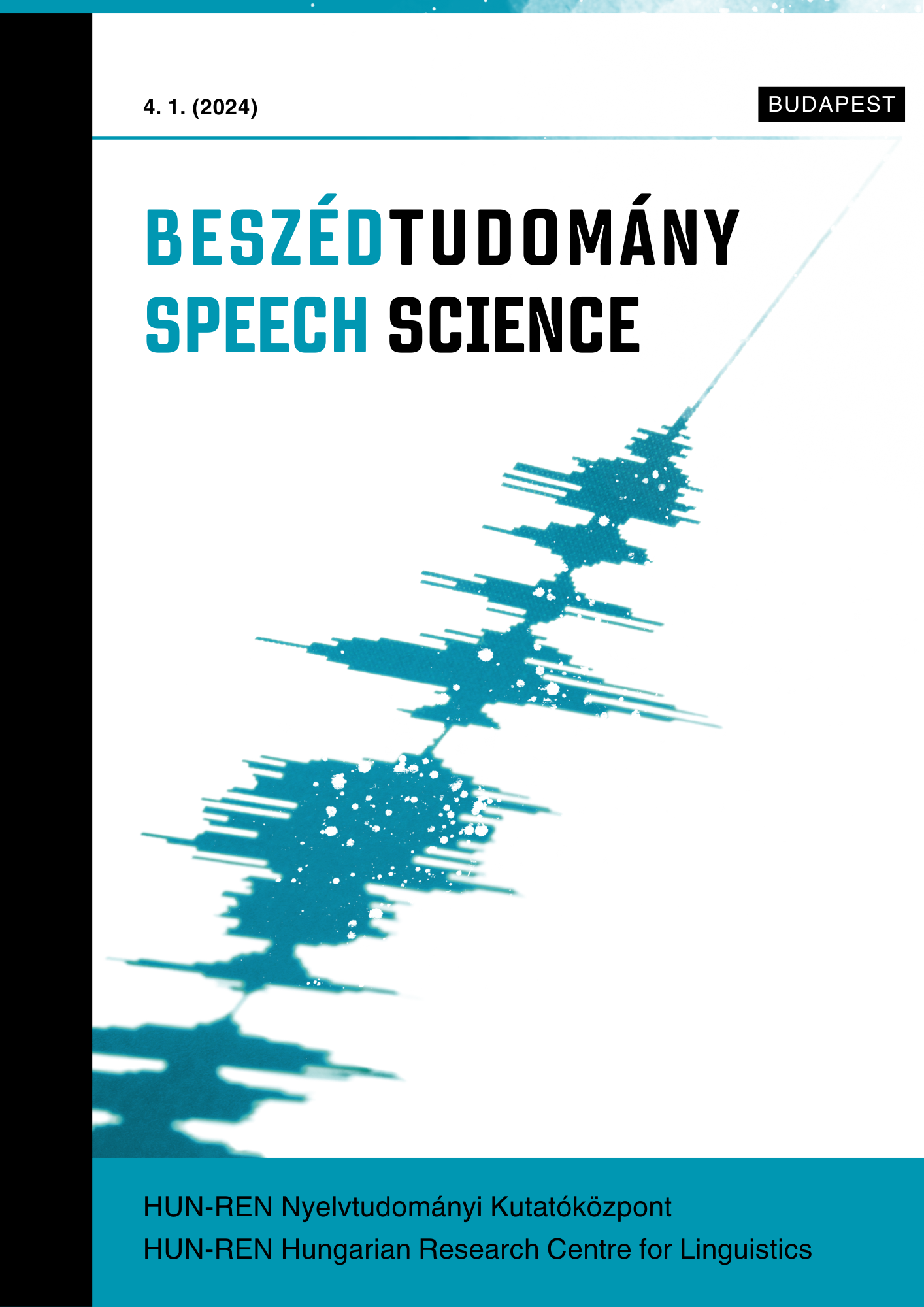Az 'iá' és az 'ijá' vokalikus hangsorok megvalósulása magyar álszavakban a nyelvállás akusztikai vetületének szempontjából
Absztrakt
In this acoustic analysis we compare the realization of iá /ia:/ and ijá /ija:/ in Hungarian pseudowords. We expect that the orthographical representation induces contrast between these forms in the phonetic realisation, more particularly, between the [j] that is not present in the orthographical representation of the pseudoword (e.g., in iá /ia:/) and the [ j] that is present in orthography (e.g., in ijá /ija:/). We suggest that the investigation of these realisations may serve as a basis for future analyses where i) epenthetic [j] appearing in hiatus, and ii) [j] present in the assumed phonological representation of a word are compared, since j is never marked in hiatus by orthography. We propose that through orthographic facilitation, the setting of the present study forces speakers to maximally exaggerate any possible phonetic contrasts between marked and non-marked [j]-realisations (in otherwise identical phonetic contexts), and this is analogous to the phonemic and non-phonemic j. Therefore, the present study can clarify if any difference may be expected in the comparison of phonemic and non-phonemic [j]. We analyse the acoustic traits of tongue height differences between the two [j] realizations in /ia:/ and /ija:/ sequences. The phonemic /j/ is claimed to be an approximant, and a liquid, and thus is characterized by more constricted vocal tract than, e.g., the high vowel /i/. The epenthetic [j] in hiatus resolution is, however, considered to be a glide which – from a phonetic viewpoint – is the result of the acoustic transition between the articulatory/acoustic targets of /i/ and /a:/. On this basis, we expect that the epenthetic [j] in the sequence iá /ia:/ is articulated with a less constricted (more vowel like) vocal tract than that observable in the realisation of the phonemic /j/ in the sequence ijá /ija:/. To test this, we analyse the acoustic traits of tongue height differences between the two [j] realizations in iá /ia:/ and ijá /ija:/ sequences, that is, we measure and analyse F1. We expect that /j/ in ijá /ija:/ features a narrower constriction in the oral cavity reflected in lower F1, than iá /ia:/.We recorded [j] realizations in /ia:/, and /ija:/ shaped vocalic sequences in nonsense words in two sibilant contexts produced in isolation by 14 Hungarian female speakers. We extracted F1 frequencies automatically at every 5th ms throughout the whole quasi-periodic signal phase in Praat. The resulting F1 curves were submitted to GAMMs, where we analysed the effect of the normalized timepoint predictor on the dependent variable, F1, and added vocalic sequence as a parametric term to each model, as well, as random smooth by each trajectory. Our results showed that regardless of the sibilant context, there was a significant difference between iá /ia:/ and ijá /ija:/ in the transitional phase connecting the two targets (/i/ and /a:/), since /ija:/ showed lower F1 than /ia:/, which reflects a narrower constriction in the oral cavity in ijá /ija:/. Therefore, we concluded that speakers may differentiate [j] variants that are marked or not marked in orthography, and it is possible that they apply this differentiation when producing phonemic and epenthetic [j] that surfaces in the case of hiatus resolution.
Megjelent
2024-08-07
Folyóirat szám
Rovat
Tanulmányok




